We leave Dominican Republic at 6.30 am for the drive across the border, into Haiti.
Armed with lots of bottled water and our box of baby bamboo plants, we set off. We have so far managed to bring the plants through customs in Santo Domingo, Dominican Republic, even though we don’t actually have up to date papers from Nicaragua.
We are hoping to get the bamboo seedlings across the border to nurseries in Haiti, as the seeds Ben brought the last two trips did not thrive once planted.
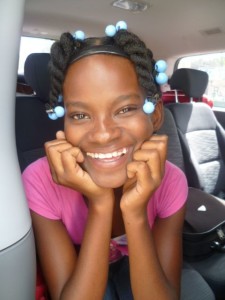
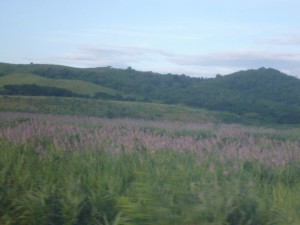
There is a very engaging 13 year old girl and her father sharing the ride in the van with us. They are going to visit family in Haiti, and later we realize they don’t have passports and are coming across illegally. (A favor by our driver.)
As we drive through the green landscape (also at the end of rainy season) I am thinking how many fancy resorts there are along the beaches of Dominican Republic, but what we see are the small towns with little colored houses lining the streets.
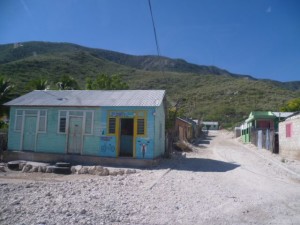
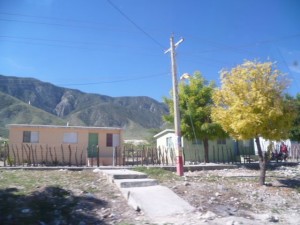
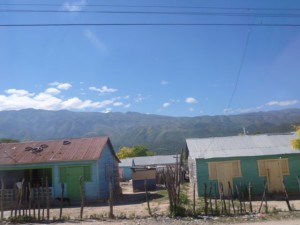
Close to the border we make a stop and witness some very animated plantain selling, off of a truck heaped with plantains.
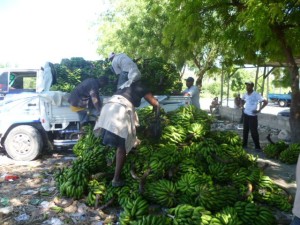
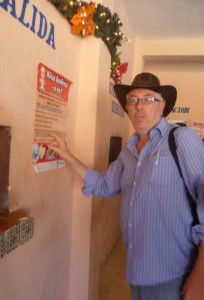
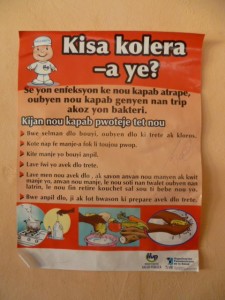
We arrive at the border from Dominican Republic to Haiti and Ben has arranged for Reverend Tom to meet us, as he is going to help us get across with minimal time and fuss. It works well, as we walk into the building and see it is packed with people. Primarily Haitians entering Dominican Republic.
We are the only “white folk”, and the only ones going in the reverse direction. The room is loud and people are shouting and arguing, suitcases are opened, people are in lines, it is intense!
There are a lot of posters in Creole which describe how cholera can be avoided. It is mostly common sense. Only drink clean or bottled water, only eat fruit and vegetables that are cooked well are washed with good water, wash your hands before you eat etc. It’s good having a priest on our side as he gets a lot of respect and without much fuss, our passports are stamped for exit.
We drive into “no mans land” between the two countries, with a strange white landscape against a blue lake.
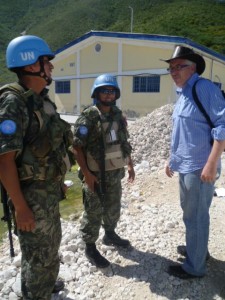
To enter Haiti we encounter UN soldiers from Peru and are taken into a small room with no one other than ourselves, except for two men on a shiny motorbike who have a money changing operation. It feels a bit like what we imagine an interrogation room might look and feel like. Those feelings aside, we do get our papers and we are ready to finally cross into Haiti.
It takes about an hour and a half…..bamboo plants checked and cleared for passage and we are finally set to go!
Not so fast! We get stopped twice by police who in both instances say we are missing some papers and need to go back to the border to get the correct papers!
We do that and then once again, finally are on our way. It is not without some amount of unease that I (Peta) enter Haiti for the first time. However, I don’t like to live my life from a place of fear and we ARE in the business of providing housing for post disaster relief, and I intend to keep up with my adventurous boyfriend.
Initially soon after the quake, when Ben took his first trip, people were asked not to go to Haiti unless they absolutely had to, as overall resources were very limited, and so I did not accompany him then.
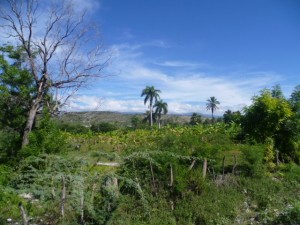
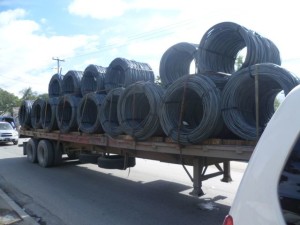
Once in Haiti and across the border, it is greener and more hilly than I had imagined it. We go from the countryside through a few small towns which have many little stores on the side of the road (phone minutes, mattresses, drinks, but most popular seem to be the beauty/barber salons on every block) a lot of dust, and the first tent cities.
The immediate feel is of noise, heat, movement and activity. The closer we get to Port Au Prince, the more traffic we encounter.
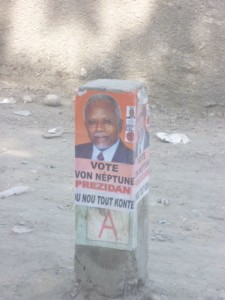
We are here just before the election on Nov 28th and the streets are plastered with political posters of the many various candidates. We have heard reports a week before about general unrest and activity related to the election in the streets.
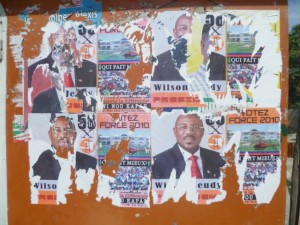
Mostly I notice the abundance of painted signage and slogans on little stores and walls depicting a variety of commercial activity.
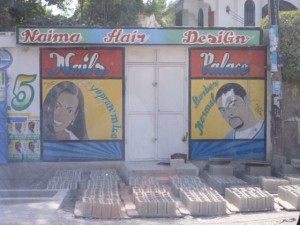
The city is covered in a greyish white “blanket”.. a result of all the dust from debris that hangs overhead and is everywhere.
People are busy.. city life in a third world country. Women selling things from baskets, people selling clothes and shoes, which are balanced atop of the rubble on the sides of the street.
The debris and rubble has very much been cleared.
Ben is able to notice a huge difference compared to his last visit when roads were completely blocked by rubble. We park the van, pay the driver and wait to meet Regine. (Regine is the green architect Ben has been working with since his first trip to Haiti.) We walk around, past the usual Parque Central of the city, only this park is packed full of tents where people have been living since the quake in January.
Yet just down the road from all of this, we meet Regine and go to a nice restaurant where we order pizza. The dichotomy is the most striking surprise to me. Tents in the central park, nice restaurants around the corner, garbage and little shacks for stores on one street, large intact upper class homes on another.
Another example of this is the array of paintings set up by an art co-operative of artists, directly across the road from the four portable toilets that serve the community of residents in the tents. It is immediately visible how much people have adjusted to life and living in tents. One tent has a barber seat set up and a man is giving haircuts, another making food for a social group and some kids playing with old wheels that become fast moving toys.
Blake, who is revving up to his coverage of the political situation pre election, after having just done an interview with the President of the Dominican Republic (while I was taking care of the stray dog), is taking advantage of this first meeting with Regine to discuss Haiti’s political history and current tendencies.
Regine drives us to her house, which is now a “bed and breakfast” guesthouse. We drive past the mixture of houses that have collapsed, and those that are untouched by the earthquake and very nice looking.
Regines’ house is three floors, with her own “apartment” self designed on the top. The design is really beautiful, with a round kitchen, two round bedrooms and a huge patio which sits under the evening sky and has a view towards the hills around and the sea in the not too far distance.
In addition to being an architect, Regine is a yoga teacher and we happily fall into ‘downward dog’ after many hours in the car.
After yoga, Regine describes her experience of the earthquake ~
35 seconds long. She was standing on her patio and although her house had very little damage she describes the sensation of feeling the whole building move forward and backward, hearing the tremedous noise and witnessing huge Hiroshima-like clouds of dust envelope the hills around her.
Four months were spent sleeping on mattresses in the garden and in tents (or the car).. 15 people including her sick 86 yr old mother, relatives, 2 neighbors and a relative visiting from the US. The first three nights no one slept at all. It was only after a few days that people ventured from their homes into the center of the city and saw the devastation and the bodies piled high and getting a full sense of the reality of what had happened to her country.
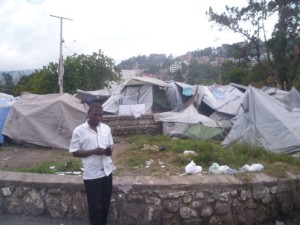
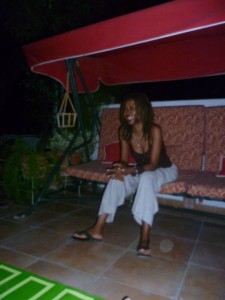
Great work, kids. I really appreciate that you are taking the time to document as you go. Thanks so much for sharing your adventure. Wow.
Thanks Sharon. It is a great way for us to diarize and document the experience. It is not every day one gets the experience of trying to help in a country, so soon after a devastating earthquake.
Interesting news. I am glad everything went smooth ….So far so good !!!!!
Please keep us informed…
HAPPY BIRTHDAY BENJAMIN….
Thank you! Stay posted for further updates.